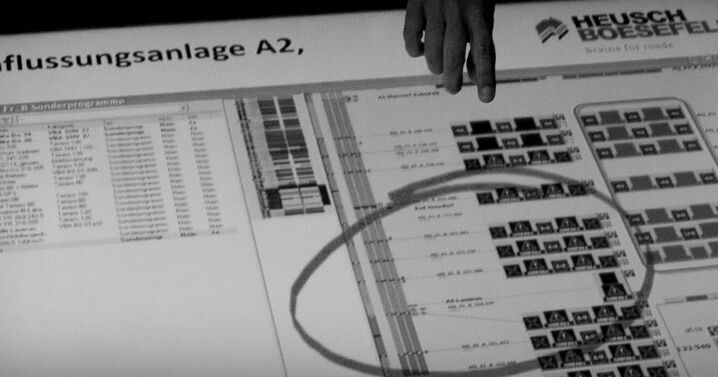Traffic control in the area Northwest

The active traffic management system on the federal highway A 2 in Lower Saxony covers the 160 kilometers from the North Rhine-Westphalian to the Saxony-Anhalt state border, making it the largest continuous ATMS in Germany and most likely the largest in the world. The second large active traffic management system is located on the BAB A 7 motorway and covers around 48 kilometers with a total of 41 display sections.
Further systems will be integrated in the near future.
The control and operating software was last updated by Heusch/Boesefeldt in 2025.
Due to the history of the system, different releases of the technical specifications for outstations (TLS) and transmission protocols are used in parallel. The oldest system parts are controlled via a total of five TC57 servers following TLS 92 via regular local field buses, while the newest system parts use TLSoverIP following TLS 2012. Different display technologies (halogen lamps/LED technology) and the activation of free text entries are also supported.
The sub-control center is fully compliant with the German MARZ 2018 guideline, but also offers control enhancements that go beyond the MARZ 2018 specifications, such as the automatic program 130 and the automatic and time-delayed deactivation of route control restrictions.
Already in 2016, the interconnected area between interchange Hannover-Ost and junction Lehrte was expanded to include rotatable prism displays for dynamic lane allocation. This measure enables the interconnected area to respond to events such as accidents or construction sites with lane closures in a program-supported manner.
To increase availability, the sub-control center is operated in a Kubernetes cluster.
The implemented solution is based on the GeoDyn2® software by Heusch/Boesefeldt and is realized on a Windows server. To increase availability, also with regard to blind operation phases during configuration extensions, the entire system of the A2 is designed redundantly and is usually operated as a hot-swap stand-by system.

